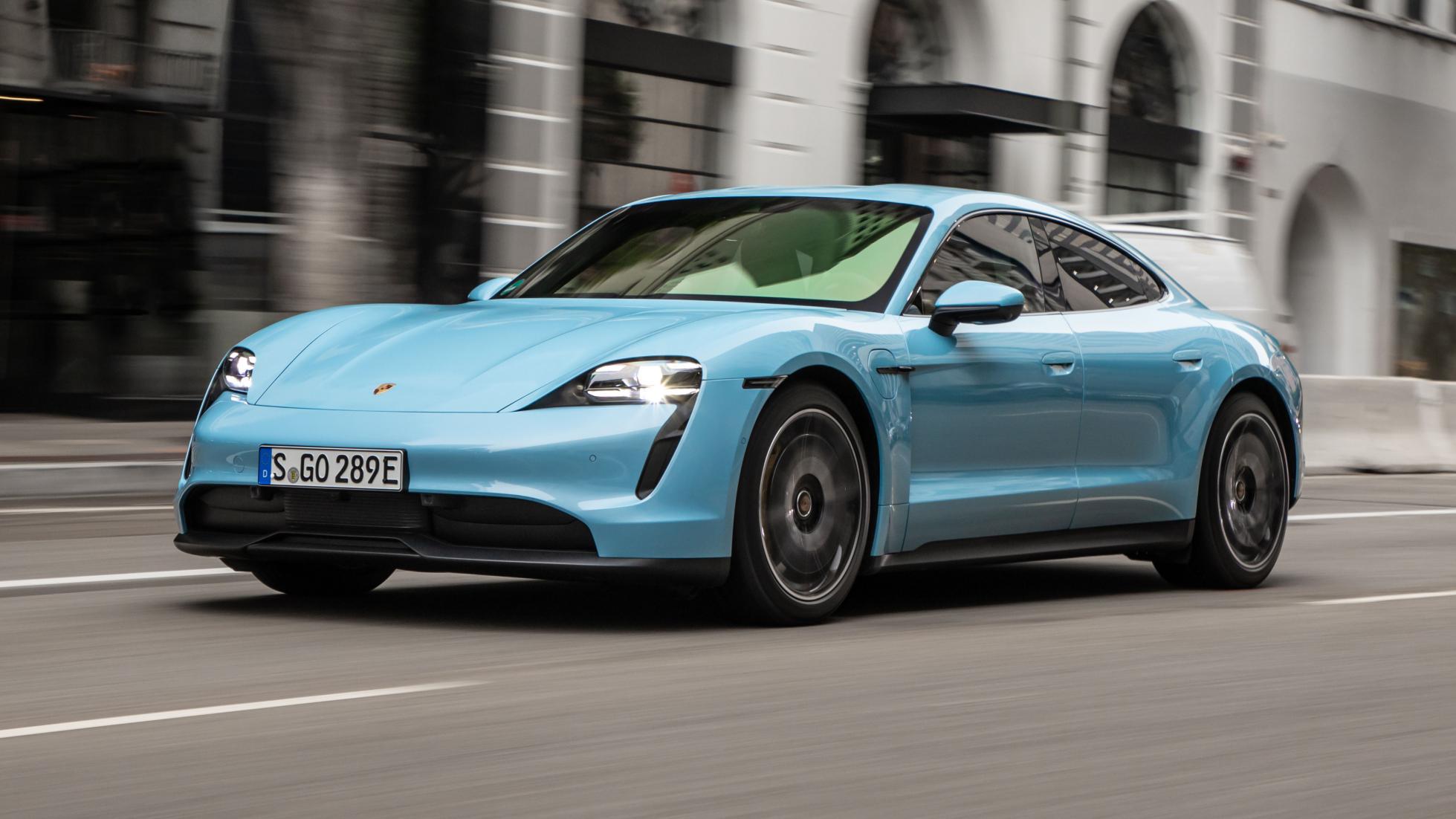First drive: Porsche Taycan 4S

It’s not got a turbo! Is the 4S the most logically named of all the Taycans?
Very possibly. The Taycan 4S actually comes in two flavours. The top one is almost a Taycan Turbo. The main difference is a smaller rear motor, but it still has the two-speed gearbox. We’re talking a hardly-lame 571bhp in launch-control mode. The front motor is the same as the Turbo’s. You can also optionally spec the 4S with the Turbo’s 93kWh battery.

The other flavour?
That’s the ‘base’ 4S. This has a 79kWh battery. Here you not only get less range (durr obviously), you also get less power, because the lesser battery can’t deliver quite such a high current even though it runs the same nominal 800V. Which means slightly milder acceleration at big speeds versus the one with the big battery.
They’ve both got ‘overboost’ for party-piece launches, by the way. The 0-100k is 4.0 seconds, when the Turbo manages 3.2.
Other spec differences?
The small battery also charges less fast at peak – but hey it’s still 225kW, a rate that’s a distant fantasy with most of early-2020 Britain’s chargers. The big battery can suck 270kW briefly, giving you at peak 10 miles (16km) a minute.
The small one has a range of up to 252 miles WLTP, the big’un 287, although they both lose 45 miles (72km) or so if you option big wheels and heavy kit. And because EVs suffer in the cold, take that as optimistic.
You made the Taycan TG’s Car of the Year 2019 (coming soon). Is the 4S that good?
I drove the 4S with the big battery. It feels, even on a gorgeous empty road, as fast as you could realistically deploy. And with four-wheel-drive traction and a Porsche chassis, you can certainly deploy a lot of fast.

There’s a wonderful flow as it winds on steering lock. Well-judged damping manages the undulations fluently. To be fair, this is with option-boxes fully ticked: 4WS and anti-roll tech.
And the brakes are terrific, even though you’re actually seldom using the discs because this car summons so much force from regeneration alone.
You’ve got enough torque to emphasise the front and rear tyre efforts: a trace of understeer here, a very mild hint of oversteer there. The character of the 4S’s electric motors helps in corners because as with any EV they’re so quick to react to inputs. But, versus the Taycan Turbo S, not so brutal that you can’t be smooth in those inputs.
Sounds like a proper Porsche then?
Even though its dimensions and weight are in the Cayenne ballpark, it actually does drive oddly like a 911 Carrera 4, albeit with less steering feel and vastly less sonic excitement.
You’re even sitting in a sports-car position, snug in the seat, fairly low to the road. The ride is surprisingly good too: firm-ish but never disturbing, and the noise of wind and tyres is well muted. The back seat is perfectly habitable, although this isn’t a big saloon like a Tesla Model S.
Speaking of which. Tesla…?
For the money, Tesla still gives you more performance. That doesn’t matter. The Taycan 4S is still quick enough, and it’s far better-steering, better-riding, better in its cabin ergonomics. Even so, it is a matter of supreme credit to the Californians that the might of Germany’s premium car business didn’t better their car for seven whole years.
More critical, no-one’s bettered Tesla’s range or charging network. If you want an EV to do unplanned big trips, get the one that can rely on Superchargers. Alternatively if you can’t resist the Porsche – and we couldn’t, because we’re suckers for a great-driving car – get the 4S with the aero wheels and the big battery. And hope Britain’s CCS charge networks soon get their act together.
Words: Paul Horrell




















